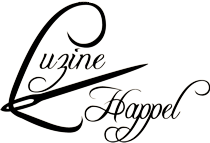Poppy motifs as a wreath design
In our region the poppy has just started to bloom. The beautifully lit fields, visible from afar, attract thousands of visitors every year. There is something magical about poppy flowers. Maybe it’s the impressive play of colors, but probably the entire interesting plant that provides insects with plenty of food.
I am also fascinated by poppy flowers. The orange-red appearing poppy fields,
the scarlet flowers of the Turkish poppy, the pink ones of the opium poppy or the tones of the new varieties – they all have something special.
Poppy is one of the oldest cultivated plants in Europe. However, it has not yet played a role as a motif in Schwalm whitework.
To change that, I commissioned the designer Christa Waldmann to design a wreath motif with poppies. She has succeeded in doing this exceptionally well: be it the massive outflow of the petals that are “wrinkled” together when the buds burst open.
Be it the delicate and ever-so-perishable petals of the opened flower,
the numerous fine stamens with their threads and sacs, which are grouped around the pistil
or the majestic appearing seed capsules.
She skilfully put everything on paper with sweeping lines and recorded it as an outline drawing. The delicate leaves are also present.
The wreath has a diameter of approximately 54 centimeters. It will be my next larger embroidery project. With its rather playful motifs, it is a completely different design than the Schwalm Band pattern.
As with all designs for which you don’t yet have a template, embroidering them will be a nice little challenge. Sometime later I will share the results with you.
Delicate Poppy and Noble Linen
Tablecloth for all Seasons – June: Poppy Flower







































